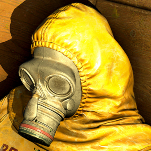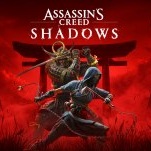Magic 2014: Duels of the Planeswalkers (Multi-Platform)

The Magic 2014: Duels of the Planeswalkers series of downloadable titles exists almost exclusively to introduce new players to the much more expensive paper version of Wizards of the Coast’s collectible card game. It’s not free, but it’s at least the convenient first taste that will presumably get the kids on the habit.
My father bought me my first pack of Magic: The Gathering cards (from the Fallen Empires expansion) 19 years ago in a Borders Books near the North Shore Mall. In the near twenty years since I’ve sunk thousands of dollars and hours in basements, malls, halls and comic book stores playing Magic. That high level of experience might explain a lot of the boredom I felt playing the entry-level Magic 2014, but it doesn’t account for the frustration I felt when the game would sputter and halt constantly, or when I would choose the wrong menu option due to the poor interface design, or the disappointment when I hit yet another advertisement or microtransaction.
If you haven’t heard of Magic: The Gathering before, the extreme basics go like this: Each player is a powerful “Planeswalker” (like in the title, get it?) with a customized deck of 60 cards and 20 life points. You and your opponent take turns drawing and playing cards—each a resource, spell or creature—with the goal of reducing your opponent’s life to zero. The huge catalogue of different cards to build decks from, the moment-to-moment strategy of which cards to play and when, and knowing how they all affect one another on the battlefield make each game of Magic wildly different every time you sit down and shuffle up. The paper version of Magic is the most rewarding and strategically engaging game I’ve ever played.
Wizards of the Coast and Stainless Games puzzled out how to make this complicated table top game easily playable with a controller with the 2009 version of Duels of the Planeswalkers, and Magic 2014 wisely leaves the gameplay elements of the series alone. During gameplay is, however, where Magic 2014’s extensive performance problems began their long grind on my patience. (Actually, this is technically the second place these problems began—the Xbox version of the game chokes up during the Wizards of the Coast logo as the game starts.) The game chugged and sputtered when I zoomed in on a card, or when an attack or spell was illustrated by a relatively unimpressive (by modern videogame standards) visual effect. When a match ended, the entire system appeared to freeze up for a few seconds before dumping me out to the next menu.
Simply plopping me into the next menu wouldn’t be so bad if the game was easily navigable. The circular menus in the game’s campaign mode do such a poor job of showing a player what they actually have selected at any given time that I entered the wrong chapter of the campaign at least once a play session.
The game’s menus also punished me for wanting to customize my deck. Whenever I finished a chapter of the campaign successfully, it added a new card to my deck automatically—whether I liked it or not. To remove it I’d have to exit the campaign and enter the Deck Manager, and once I’d removed the unwanted cards I would be back at the game’s main menu. Delving back into the campaign the game would require me to re-navigate to the chapter I was just at and replay the exhausting voice-over narrative I’d suffered through once before.
Yes, voice-over. As part of the appeal to a more casual audience, Magic 2014’s campaign mode very loosely tells the story of you aiding one of the Planeswalker characters—Chandra Nalaar. I like these characters, Jace The Mind Sculptor best of all, and they bring tons of flavor to a game which could easily turn into an endless stream of generic fireballs flying at nameless grizzly bears. Unfortunately, the repetitious voice-over and CGI cut-scenes where Chandra speaks directly to the player feel like remnants of the CD-ROM era of 90’s PC gaming at worst, and the in-line video as I wait to board the Magic: The Gathering 3-D amusement park ride at best.
Playing through the campaign mode and the boss-rush “revenge” mode felt like a chore, but again, I’m not necessarily the Magic rookie Stainless Games and Wizards of the Coast built this for. However, customizing that deck of 60 cards is a huge part of what’s exciting about Magic, even at a very casual level of play, and these modes limit your customization by forcing you to unlock cards one at a time, and then slightly tweak 10 stiffly pre-constructed decks. To me it felt suffocating, and I imagine even new players would bristle at how little control they have over which cards they can play once they’ve gotten their feet wet.
Magic 2014 provides a mode for experienced players like me, though, and I eagerly rubbed my hands together in anticipation of playing the “sealed deck” mode. In this mode, players are given 6 packs of 15 random cards and allowed to build a 40 card deck from that pool. Any deck they want! Players take that deck and play against the computer for two more packs of 15 cards to add to their decks, or against other players over Xbox LIVE in ranked or unranked matches. It would be a fantastic addition to the Duels of the Planeswalkers experience and a great way for more experienced players to play the game, if it weren’t coupled to a completely egregious microtransaction system.
The game allows you to open those six packs of digital cards and create sealed decks exactly twice before requiring a $2 purchase for the privilege to do so again. That’s two very real dollars for digital goods that can’t be traded or sold. There’s not even the option to delete your existing decks for the opportunity to open six new packs of random cards—you’re stuck with what you got at first unless you pony up more dough. Imagine you’ve purchased a first-person shooter, and upon starting it up you’re handed a random weapon—an assault rifle, say. You have fun for a bit, but would like to try the shotgun. “Sure,” the game says, “For $2 you have a random chance at getting to use the shotgun.”
-

-

-

-

-

-

-

-

-

-

-

-

-

-

-

-

-

-

-

-

-

-

-

-

-

-

-

-

-

-

-

-

-

-

-

-

-

-

-

-









































